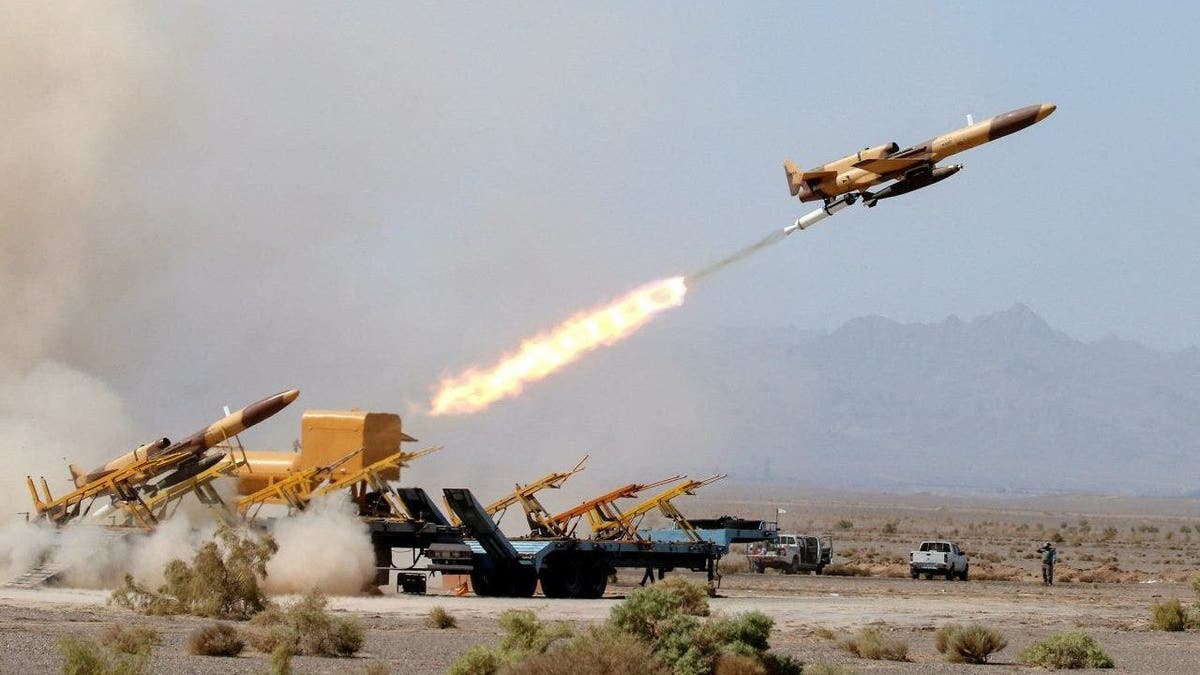John Kirby: We are 'very much focused' on getting Paul Whelan out of Russia
NSC Coordinator for Strategic Communications John Kirby speaks on how the Biden administration is currently working to bring Paul Whelan back to America on 'Your World.'
Russian arms supplies have dwindled to the point that it will "struggle to replenish" its reserves even with support from nations like Iran and North Korea a senior military official confirmed late Monday.
Moscow’s war in Ukraine has dragged on for more than nine months, far longer than Russian President Vladimir Putin ever predicted, defense officials have long assessed.
Russia’s inability to successfully push its forces forward and recent losses on the front lines has prompted the Kremlin to continue its assault by heavily relying on shelling and aerial assaults.

A man covers a dead body after a residential building was hit by a Russian attack in Chernihiv, Ukraine on March 17, 2022. (State Emergency Service of Ukraine/Handout/Anadolu Agency via Getty Images)
RUSSIA SEEKING HUNDREDS OF BALLISTIC MISSILES FROM IRAN IN 'FULL-FLEDGED DEFENSE PARTNERSHIP': UK
The constant barrage of missile fire is an attempt to dampen the morale of Ukrainian soldiers and civilians alike and force Kyiv to make concessions – a strategy that has not only yet to succeed, but is proving costly for Moscow.
"We assess that at the rate of fire that Russia has been using its artillery and rocket ammunition – in terms of what we would call fully serviceable artillery and rocket ammunition – they could probably do that until early 2023," a senior military official told reporters Monday evening.
The official said that Western intelligence has assessed Russia’s "fully serviceable" ammunitions are "rapidly dwindling," and it is likely forcing them to increasingly rely on arms with "degraded conditions."

A Ukrainian serviceman looks at a Russian ballistic missile's booster stage that fell in a field in Bohodarove, eastern Ukraine, on April 25, 2022, amid the Russian invasion of Ukraine. (YASUYOSHI CHIBA/AFP via Getty Images)
VLADIMIR PUTIN CANCELS ANNUAL PRESS CONFERENCE AS RUSSIA STALLS IN UKRAINE
The degraded ammunitions is in reference to dated projectiles that in some instances are more than 40 years old and are not guaranteed to detonate or explode upon impact.
"This essentially puts Russian forces in a position to have to make a choice about what risks it's willing to accept in terms of increased failure rates, unpredictable performance, and whether or not these degraded munitions would require any type of refurbishment, which of course requires a certain amount of expertise and time," the official explained.
"Given the current state of Russia's munitions stockpile, it's not surprising that they continue to look at opportunities to work with countries like Iran and with and North Korea to try to gain additional capability," the official added.

A drone is launched during a military exercise in an undisclosed location in Iran, in this handout image obtained on Aug. 25, 2022. (Handout via REUTER)
CLICK HERE TO GET THE FOX NEWS APP
Though Russia has used Iranian drones to hit Ukraine, the amount of arms it is expected to continue to receive from its partners will likely not be enough backfill its stocks, even with steps Tehran, Iran, and Moscow are taking to streamline drone production within Russian borders.
"The Russian military, will very likely struggle to replenish its reserve of fully serviceable artillery and rocket ammunition through foreign suppliers, increased domestic production and refurbishment," the senior military official confirmed.





















